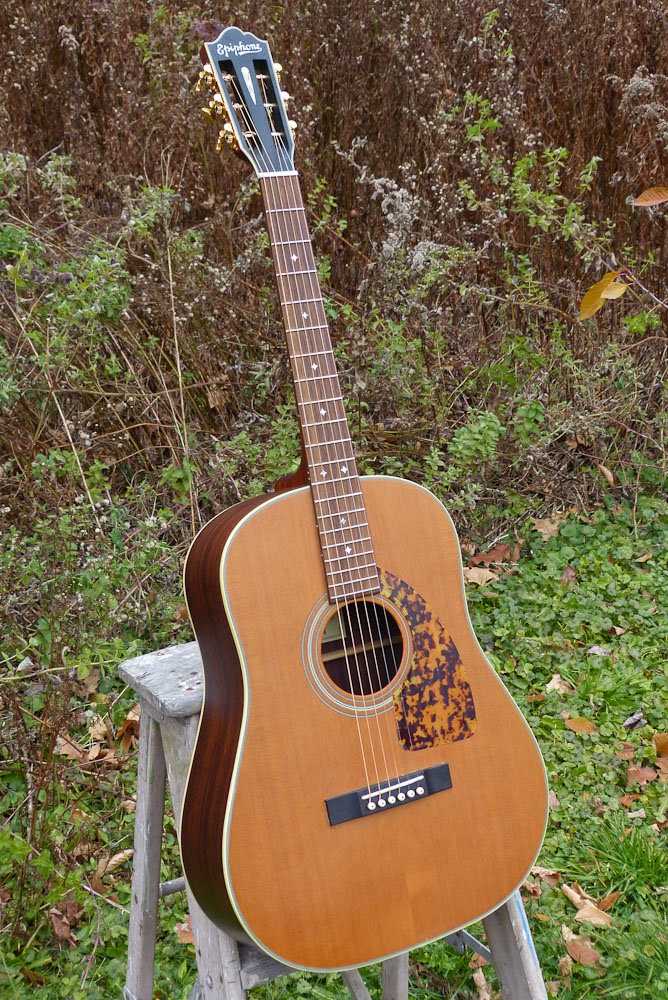2005 Epiphone AJ-500RC Masterbilt 12-fret Dreadnought Guitar
Wow is all I can say to this fella -- and especially for the money these are going for used. This came in for a bridge reglue and setup via a customer and ended up getting that as well as a bit of spot work on the frets (a few were uneven). It's like-new and, from what I've gleaned via the serial number, it was made in China in the "Grand Reward" factory in 2005. This model is sort of a clone of late 30s Epiphone 12-fret dreads (super rare guitars) and sports solid cedar over solid Indian rosewood. It was discontinued pretty early on but there seem to be a lot of fans of the model out in net-land.
It handles like a Martin 12-fret dread but with perhaps a bit more of a Gibsony 30s profile to the back of the substantial neck. Tonally, and I'm guessing because it's got a cedar top, it responds like an older guitar but with a bit more clarity in the mid-range than I'm used to from old 12-fret dreads. As far as dreads go, though, this is "right on" for my style of playing. You get a lot of clear, full, big, articulate sound which makes it really useful for someone who flatpicks with a lot of crosspicking and bass runs but also sounds great for fingerpicking, as expected.
I should say that the body shape is more reminiscent of those big Gibson-made "Radio Grande" Hawaiian guitars from the 30s. This gives it a slightly squatter feel vs. a Martin 12-fret dread which means, at least for me, that my arm is in a better picking position.
It has a 25 5/8" scale which gives it plenty of power and rumble but I can't help but wonder what a 24 3/4" length one would've felt like on this.
Classy headstock with "straight" top tuner slots and a 1 3/4" bone nut.
Big old frets and star-shaped inlay adorn the radiused rosewood board.
Who doesn't love a big old vintage-style guard?
Part of me wasn't surprised that the bridge came off... I expect it on Asian-import stuff. The culprit here is that, like on old 60s Harmony guitars, they only glued the center 2/3 area of the bridge foot rather than the whole foot. Typical...! They're more worried in the factory setting about leaving a glue trail on the edge of the bridge rather than keeping it attached to the top.
The rosewood back and sides are, surprisingly, solid.
This begs for a button.
The neck shape is big and honking like a mid-30s Gibson depth meets a mid-50s Martin cut. I would've expected this meant that the truss needed only minor tweaking... but... not true! I had to crank this a bunch to get it back to true during setup. It still has adjustment room... I just think it was never adjusted.
The endpin jack is a lead for an LR Baggs M1 pickup which I removed for the photos (they come out easy).
And a big old plush violin-style lightweight case? Sheesh.


















Comments
It was fun to play with all that room on the fingerboard and such a responsive cedar top. But there was a slight twist to the neck and I ended up selling it for nearly as much as I paid and sunk the dough into a Martin.
Guys rave about these. They do have a following. And they're nicely built and nice cosmetically too. Enjoy!